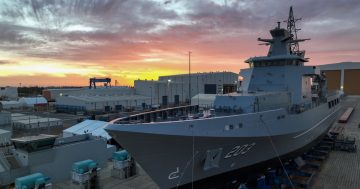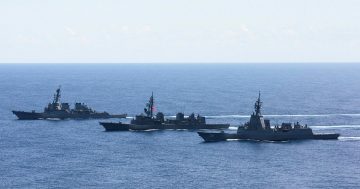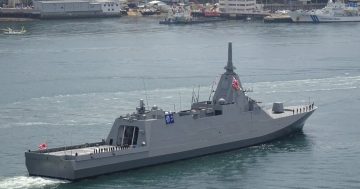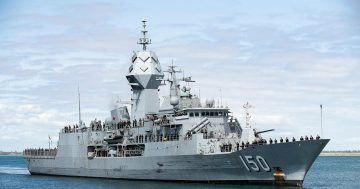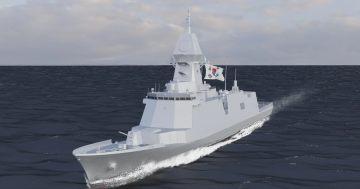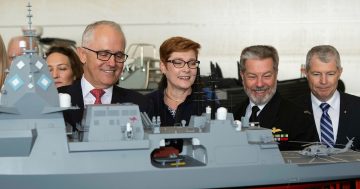
Chief of Navy Vice Admiral Mark Hammond – flanked by Defence Minister Richard Marles (left) and Defence Industry Minister Pat Conroy – highlighted the problems Defence is having with recruiting uniformed personnel. Photos: ADF.
Commentary on last Tuesday’s release of the Federal Government’s response to the independent analysis of the Royal Australian Navy’s future surface fleet and shipbuilding plans has generally been positive, although concerns remain about a widening capability gap and recruitment goals.
The review was implemented after last year’s Defence Strategic Review (DSR), which identified schedule, cost and operational risks to the Navy’s plans to acquire nine Hunter-class frigates and 12 Arafura-class offshore patrol vessels (OPV).
An independent analysis team agreed with DSR findings that the current and planned surface fleet is inadequate for the future threats Australia will face.
In response, the government has reduced the planned Hunter-class project from nine to six ships and the Arafura-class OPV buy from 12 to six. Instead, it will acquire 11 medium-sized frigates, six large optionally crewed surface vessels (LOSVs), and a larger number of smaller vessels for constabulary missions.
The decision to reduce the Arafura OPV buy wasn’t unexpected, according to Expert Associate at the ANU’s National Security College and former naval officer Jennifer Parker.
“Another troubled naval shipbuilding program, it has never been clear where the Arafura sits in the Navy’s concept of operations, its crew size in the 40s makes it inefficient for constabulary operations and its lack of armament and survivability make it unable to be used in the event of crisis and conflict,” she wrote in the Australian Financial Review last week.
The first of the medium frigates is scheduled to be delivered around 2030, at least two years before the first Hunter. Further, the first three frigates will arrive at yearly intervals, meaning the Navy will be about four ships ahead of where it would have been had it stayed the previous course.
However, one of the Navy’s current eight Anzac frigates will be retired immediately and a second one will follow next year. With the first new frigates not due to enter service until 2030 and the first Hunter delayed until at least 2032, this leaves just eight or nine surface ships – down from the current 11 – in service from 2025 to 2030 and thus, a large capability gap.
Allowing for maintenance, training and upgrades, the RAN allows a rough ratio of two-and-a-half ships required for one ship to be deployable at any one time. So, on average, the Navy will have just three or four major surface vessels available for deployment for most of the rest of this decade.
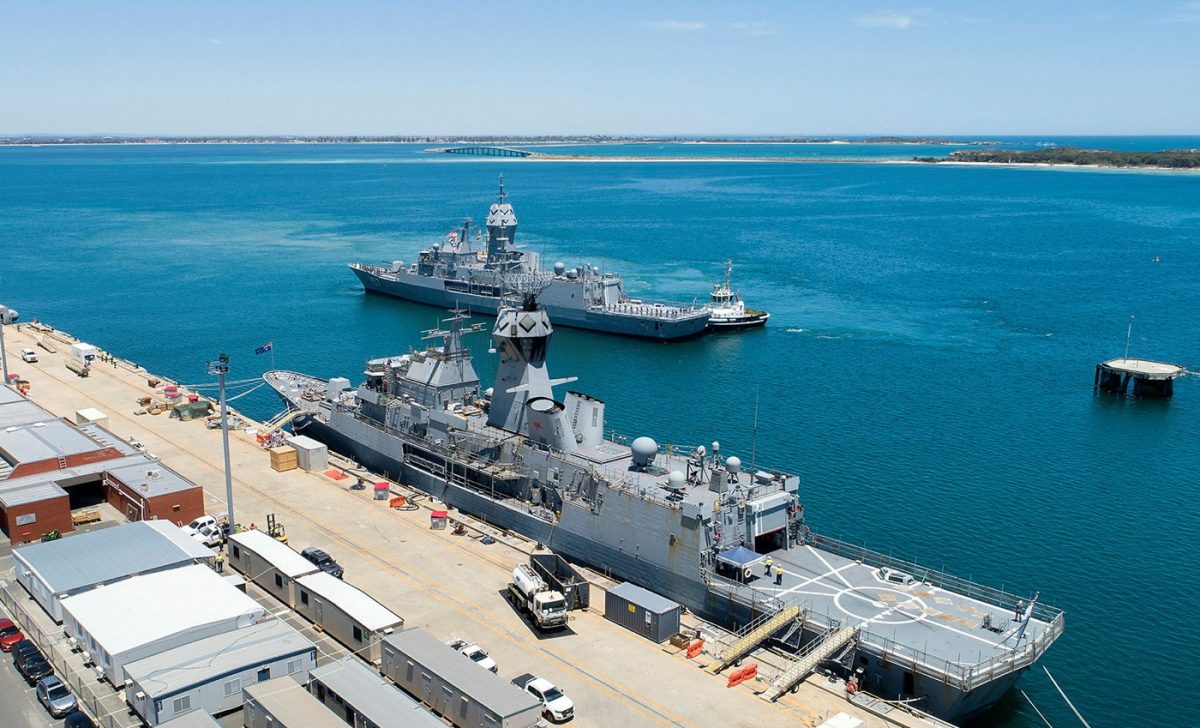
Crew shortages have reportedly meant two Anzac frigates were unavailable for deployment for most of 2023.
The new frigates will be less expensive and have lower crew requirements than the larger Hobarts and Hunters, but will still have credible air defence and anti-submarine capabilities.
The LOSVs – when they enter service in the late 2030s – will require minimal crewing and will add magazine depth, and thus capability, to the Hobarts and Hunters. There are also the benefits of operating a vessel common to Australia’s principal naval ally, the US Navy.
“For 50 years, reviews of the surface combatant fleet have been calling for a larger Navy to defend Australia’s extensive maritime interests,” Ms Parker wrote.
“It is indeed a historic day that the government has agreed to support this capability. But, there are significant challenges to be addressed, including the development of the workforce to both build and crew these vessels.”
Since 2020, the ADF has had a goal of growing its uniformed complement by a third. But instead, numbers across all services have gone backwards, with recruitment goals consistently not only not being met, but not keeping up with separation rates.
Indeed, it became so bad that it reportedly wasn’t possible to crew two of the Navy’s Anzac frigates through 2023.
Whether this can be blamed on nearly full employment, poor governance, reduced investment, reports of poor treatment of veterans stemming from the Royal Commission into Veterans’ Suicide, or other factors, recruitment continues to flounder.
While Chief of Navy Vice Admiral Mark Hammond said retention rates had improved, attracting Navy members remained a problem. At Tuesday’s announcement, he offered few solutions, but quickly switched to a recruitment pitch.
“I love talking about the Navy workforce,” he told the media.
“Our separation rate is 8.2 per cent and falling. That is substantially lower than the long-term average of 9.5 per cent. We’ve set an ambitious target to grow from our current strength of 15,000 to 20,000, and we’re doing it against a backdrop of one of the most competitive marketplaces we’ve seen.
“There’s been a more than 90 per cent correlation between unemployment in Australia and the ADF recruiting potential. So, we are investing in new initiatives to increase the size of the Australian Navy and the integrated ADF, for that matter.
“So, to any young Australians looking for an idea as to what they might like to do, I would offer that we’re an employer that underwrites your cost of living and we’ll pay you to go and see the world and now is a great time to join the Australian Navy.”













